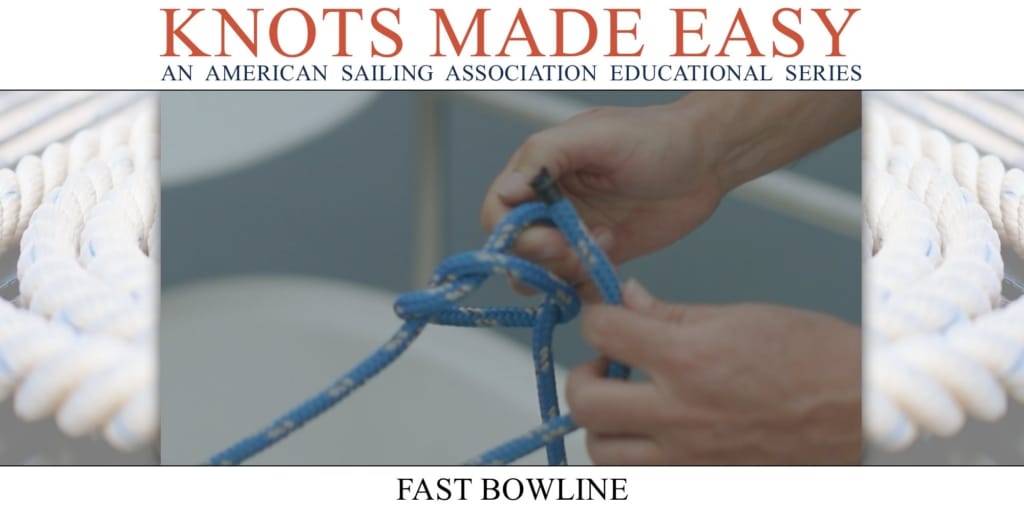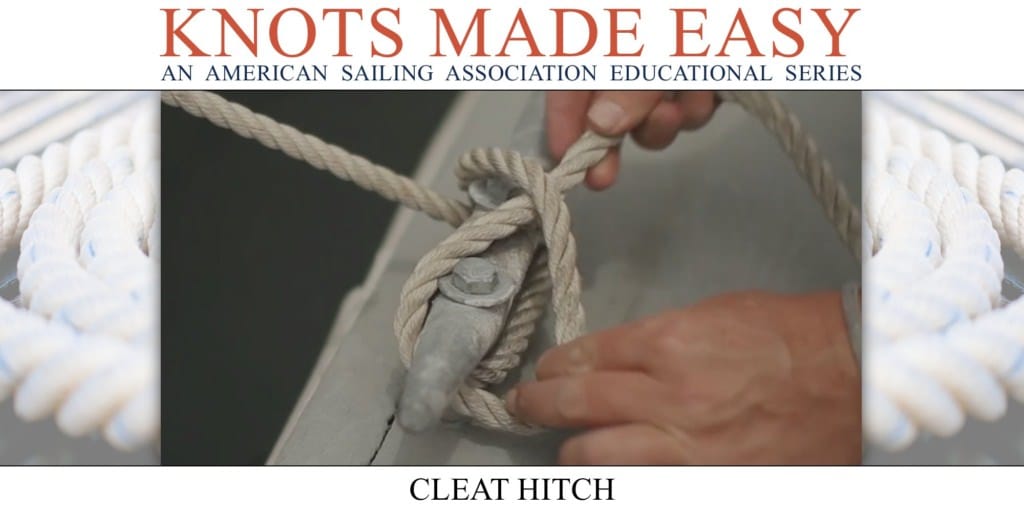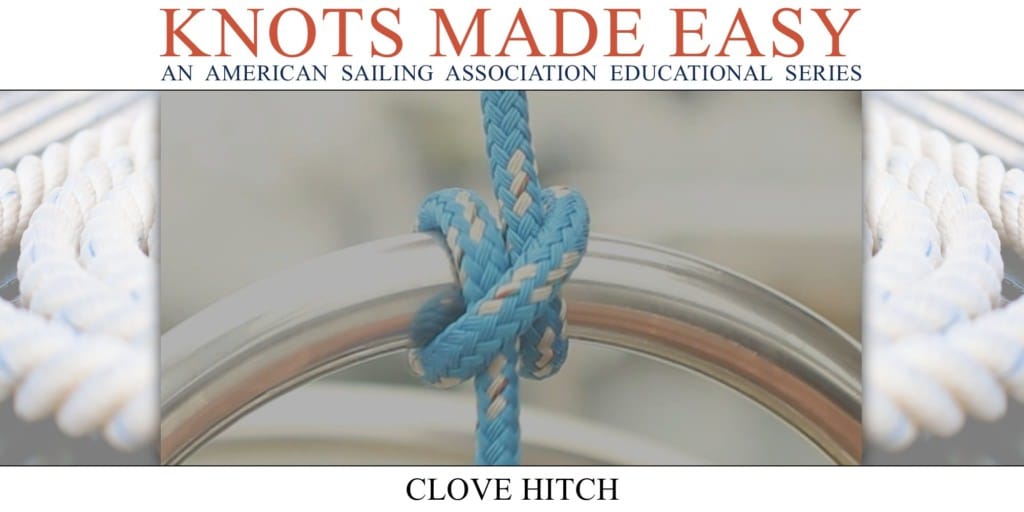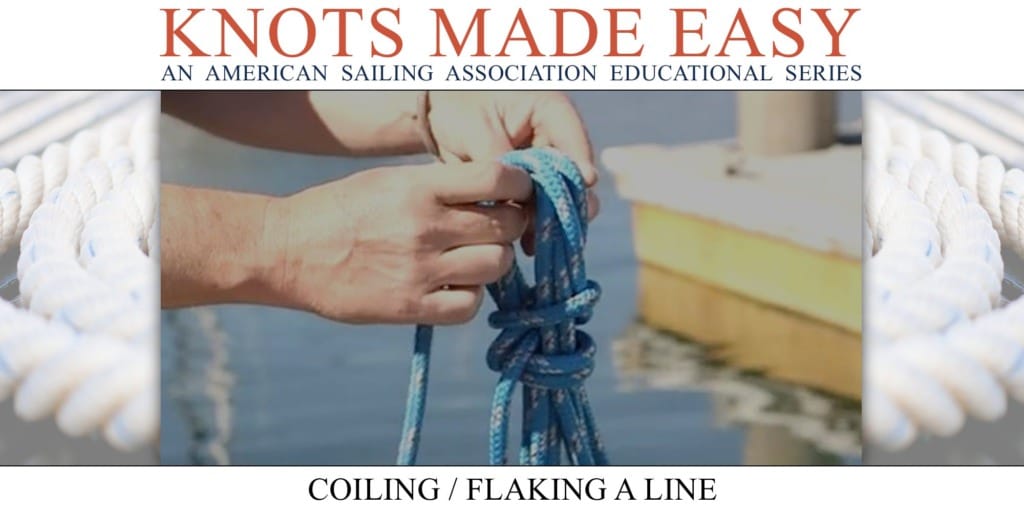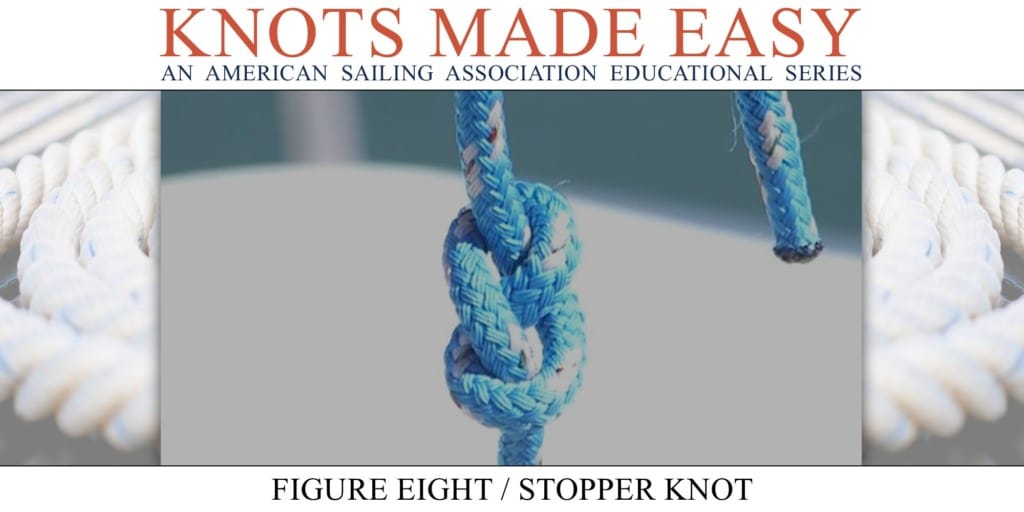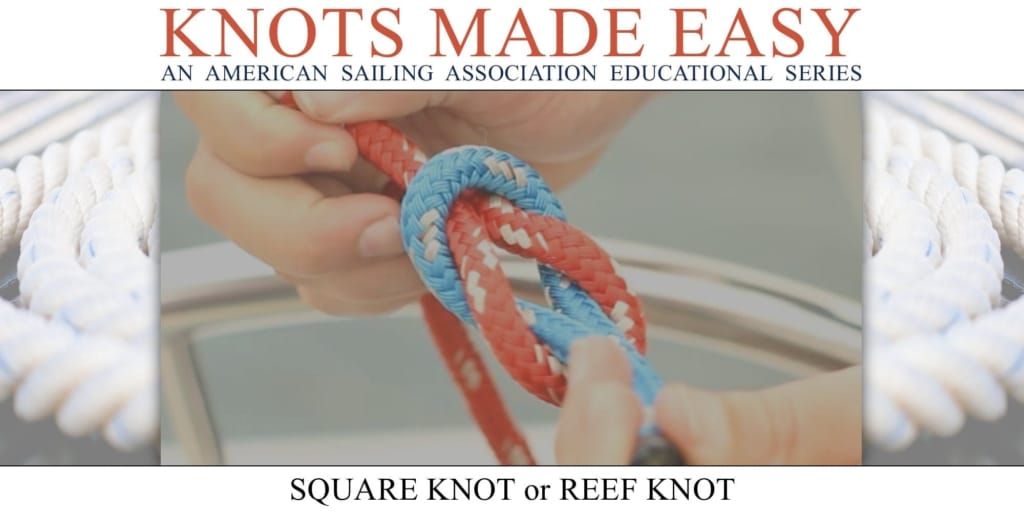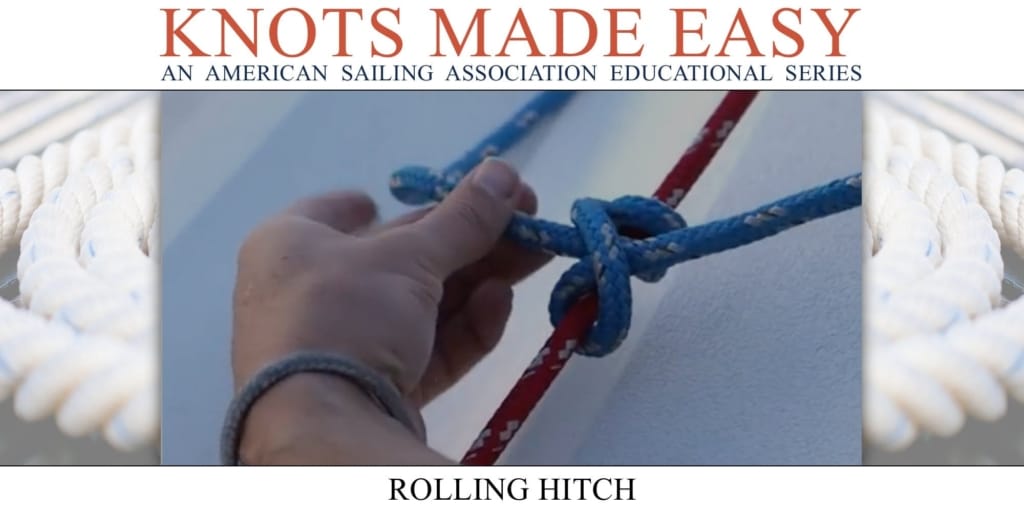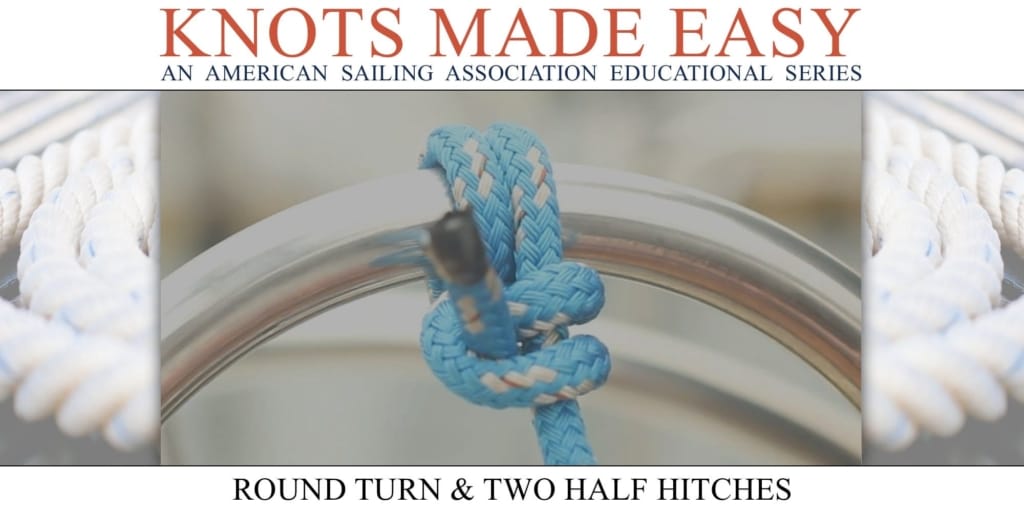Knots Made Easy
An American Sailing Association Educational Series
There are as many sailing knots as there are stars in the night sky — or so it seems. But the reality is that most sailors can get along with only knowing a few, as long as they’re the right ones. Our Knots Made Easy video series includes some of the most important sailing knots, explaining what they’re used for and how to tie them. Don’t forget, it’s necessary to practice these in order to get them down. Your fingers need the tactile learning experience in order to develop muscle memory that will allow you to tie them quickly when you need to!
Knowing these basic knots will make you more useful as a sailing companion. Next time you go out sailing with a friend, take a charter, or join a flotilla, you’ll feel more comfortable helping out around the boat when it’s time to put fenders out, tie up to the dock, or make a line fast.
Bowline
One of the most beautiful and useful sailing knots is the bowline. The bowline forms a temporary eye, or loop, in the end of a line and is commonly used to attach a jib sheet to the clew of the jib. Remember, practice makes perfect! Watch Now >
Fast Bowline
If you want to impress your friends here’s a trick for tying a quick bowline. With a bit of practice this method can be lightning fast. Watch Now >
Cleat Hitch
Every sailor needs to know the cleat hitch. It is essential for docking. Many do it incorrectly – watch this video and learn it the right way. Watch Now >
Clove Hitch
The Clove Hitch is usually employed for temporary needs. Using the Clove Hitch you can quickly tie a line to a pole, a ring, or the standing part of another line. It’s secure, as long as it’s under a constant load, but will work loose when subjected to on and off loads and can be difficult to untie under pressure. Watch Now >
Coiling A Line
Lines on a sailboat need to be kept neatly. Most lines that are not in active use are stowed in a neat coil, and active lines often need to be coiled as well. Check out this video to see how it’s done!. Watch Now >
Figure Eight / Stopper Knot
This knot is fun to tie and can save you a lot of hassle. It’s commonly tied at the bitter end of halyards and sheets to prevent them from getting inadvertently pulled out of the block, fairleads, and jammers they’ve been led through. Watch Now >
Square / Reef Knot
The Square Knot, also called the Reef Knot, is well known to school children who have given up on trying to tie their shoe laces. On a boat it is used primarily for tying a rope to itself. Like when you are securing an item to the boat or a spar. Watch Now >
Rolling Hitch
This valuable hitch can be used to tie a line to the standing part of another line or to a spar. It’s especially useful when you need to transfer the load from one line to another – remember that winch override? It’s similar to the clove hitch but with an extra turn on the side that’s in the direction the load will be applied.Watch Now >
Round Turn & Two Half Hitches
This may be the most underrated knot. It’s fast to tie under load and applicable all around the boat. It’s much more reliable and certainly easier to untie than its cousin the clove hitch. This knot is secure, does not allow the line to chafe, and is easily undone. Use this hitch to tie a dock line to a mooring. Watch Now >


